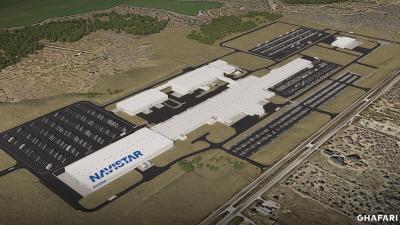Thought Leadership

By Phil Christman
President, Operations
What is Manufacturing 4.0, and what does it mean for the commercial vehicle industry?
It’s an especially timely question today, as Navistar breaks ground on constructing an industry-leading benchmark manufacturing facility in San Antonio.
We’ve said that this new plant will incorporate Manufacturing 4.0 principles. That means that it will be ready to take full advantage of the tools and technologies available through the fourth Industrial Revolution, including connected technology and machine learning. That fourth revolution builds on the first three: 1) machine power, 2) mass production and assembly line and 3) computers and automation.
The connection of digital and physical technologies provided by Manufacturing 4.0 will allow us to more easily make data-driven decisions. These decisions will also take place much more quickly.
For example, thanks to sensors on our manufacturing equipment, we will know if the temperature on a bearing reaches a level where it could break and stop the production line. And if a defect happens at the end of the line, we won’t have to wait for 10 trucks to be produced before we identify the problem; we’ll know with the very next truck. This close interconnection of systems and processes will be a major help in achieving targeted levels of quality.
The interconnection of smart systems will also help us build vehicles more precisely, based on their scheduled delivery to customers. That will also be facilitated on the supply chain planning side, as machine learning will track all the factors that can impact the inbound supply chain. If a part is going to be late getting to the plant, the system will be able to calculate in seconds which remedial action is the least costly, contrasted with hours today.
The advent of Manufacturing 4.0 means a lot for the industry, and we’re determined to make the most of it at Navistar. Based on our experiences in San Antonio, we’ll also be better able to cascade best practices to our other manufacturing facilities.
But it’s worth reminding ourselves that Manufacturing 4.0 only automates the production system a company already has in place, including the human foundation. That’s why we’ve been working so hard to implement a production system that is based on five key pillars:
- Communications or human infrastructure. To run our plants effectively, we’ve placed tremendous emphasis on our people being in constant communication.
- Standardization. We’ve identified standard processes that we adhere to strictly in order to achieve quality results.
- Just in time means that parts are arriving on time, in the right quantity and delivered in the right way.
- Quality focus means we’ve established clear milestones that must be met before production can move to the next phase.
- And continuous improvement means constantly looking for new opportunities to do better.
I’m very proud of the emphasis that Navistar has placed on this five-pillar foundation. Over the last five years, we’ve established a robust quality focus that enables our plants to deal with supply chain disruptions and other issues without affecting the customer. Having this sound production system in place is what makes a company “Manufacturing 4.0 ready” and able to get the most out of the new technology tools.
It’s fitting that our company’s Navistar 4.0 plan to grow profitably was inspired by Manufacturing 4.0, because their foundations have so much in common. As the Navistar 4.0 logo shows, it’s all about having the right mental outlook: changing our culture to empower our employees, performing in a way that delivers value, and being focused on what improves the customer experience. If we make ourselves better by following those principles, it all adds up to “playing to win” for Navistar.
Our goal is to be the benchmark in truck manufacturing. And the production system we’ve already built takes us a large part of the way there. I can’t wait to see where Manufacturing 4.0 leads us.